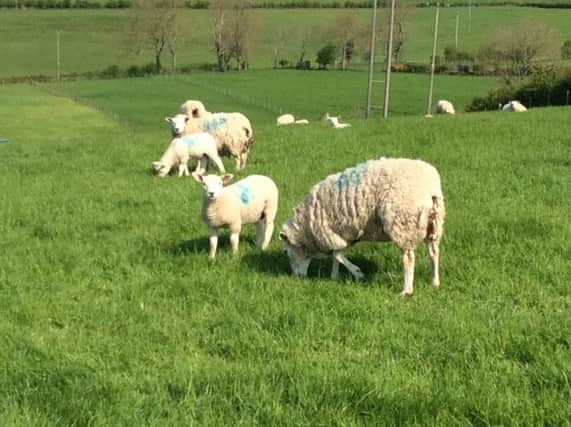Identifying parasitic diseases before they strike your flock


Parasite Watch, organised by leading animal health company, Zoetis, is based on a nationwide network of farms providing diagnostic samples through the summer. From these, real time information is available to farmers about parasite challenges in their local area.
Aurelie Moralis, Veterinary Consultant with Zoetis said: “Parasite Watch is the first scheme of its kind in the UK and farmers in each area are an integral part of helping fellow farmers to make informed decisions on the potential parasite challenge on their farms.
Advertisement
Advertisement
“In Northern Ireland Crosby Cleland will communicate the highs and lows of his lamb rearing season in Farming Life and on our twitter site @sheep_farmers.”
Crosby, whose sheep enterprise is situated at Brookmount Farm, Saintfield is noted, not only for his business-like approach to sheep farming, but also his progressive breeding strategy and contribution to industry improvement. He is the chairman of the UFU Beef and Lamb Committee and of AFBI’s Sheep Advisory Committee.
He runs a very busy contract fencing business, so efficiency is key to his sheep enterprise. This is achieved by a combination of sheep breeding, enterprise management and disease prevention rather than cure.
He has developed a breeding strategy based on three breeds – Lleyn, Highlander and Primera with all recorded under the Sheep Ireland Five Star programme. The pure Lleyn ewe lambs are kept for breeding and pure Highlander rams are used on the Lleyn ewes for maternal stock with high growth rates. The pure Primera rams have been very successful as terminal sires with great growth rates, ease of management, efficiency and easy lambing.
Advertisement
Advertisement
These attributes are certainly appreciated by Alan Irwin who is responsible for the one man operation looking after the 750 ewe flock and 250 breeding replacements. Sheep are gathered and moved within the farm via a series of grass tracks alongside fields. To aid management, a number of small paddocks have been created around the farmstead.
Crosby likes to identify problems before their effects are felt and has always sent faecal egg counts to the lab every four weeks in order to check for disease. As a participant in Parasite Watch he is now sending the samples every two weeks. This provides advance warning of parasitic diseases so that immediate action can be taken. It also saves money on drenches e.g. last year no lambs were drenched until late August.
As the faecal egg counts have identified moderately high coccidial oocysts Crosby has decided to put Deccox® 6% in the creep feed. He points out that this is more economical than drenching the whole flock.
Aurelie Moralis explains: “Deccox® 6% acts at the beginning of the coccidian life cycle and inhibits the excretion of oocysts (eggs) into the environment. Because it is used every day in the feed, the treatment has a daily acting, non-antibiotic effect with the added benefit of no meat withdrawal period. It also allows some natural immunity to build up in the animal.”
Advertisement
Advertisement
Crosby also includes an early drench for Nematodirus as low numbers of Nematodirus eggs were seen in the faecal samples.
Aurelie adds: “Farmers should be aware that Nematodirus infection can cause similar clinical signs and might be confused with coccidiosis. As the treatments for Nematodirus infection and coccidiosis are different, accurate diagnosis and treatment recommendation, through your veterinary surgeon, are essential.”
Overall, Crosby is satisfied with the progress of the sheep enterprise with lambs having an average DLWG of 280 to 300 grams in their first six weeks of life. This includes breeding stock and lambs for finishing.
His biggest challenge at the moment is grassland management – keeping fresh grass in front of the lambs and making silage when the grass gets too long.